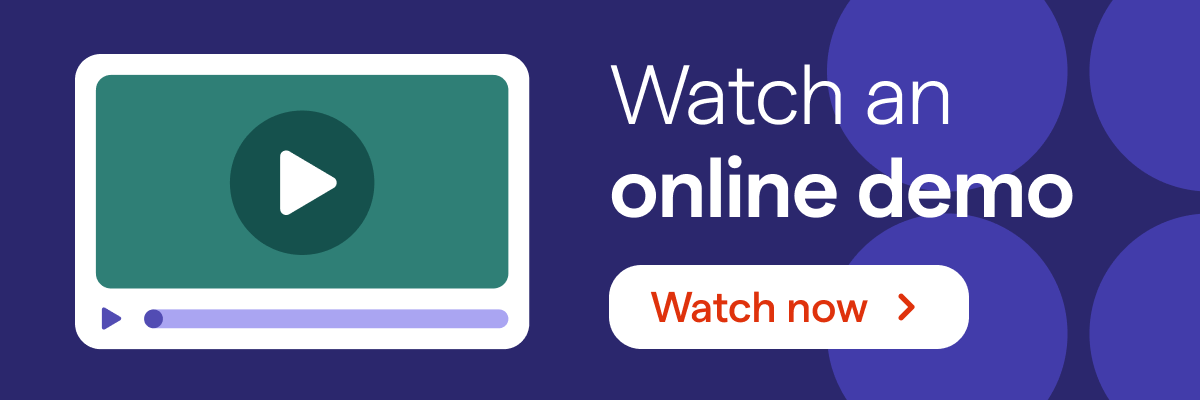AI and cloud technology are here to turn you into a financial futurist

Welcome to the brave new world of accounting and tax.
In today’s financial landscape, artificial intelligence (AI), machine learning, and cloud tech don't replace you – they elevate you.
You’ve heard the mantra – ‘the future is automated’. With AI and machine learning sweeping through every sector, accounting and tax professionals find themselves at a crossroads.
It’s your choice. Either stick with traditional methods and sacrifice revenue or embrace new technologies to evolve your role and run a more profitable firm.
You have an opportunity to ride the wave of disruption – unlocking opportunities that redefine the value you impart to clients, and reshape the industry in the process.
Stop bleeding cash and working longer hours
Here's the rub – we're not seeing the end of traditional accounting, but its transformation into something far more dynamic and sustainably competitive.
A transformation that stops accounting and tax professionals just like you from losing out on $76,636 every year, on average, in unrecovered out-of-scope work.
A transformation that means no more long working hours during a staff shortage, and having less time to spend building a better, more resilient firm.
We’re talking about AI and cloud-based solutions that can handle the accounting admin, like billing and payments. So, you’re free to focus on strategic and client-centric tasks that foster loyalty and long-term success.
Turning data into strategy with AI-enhanced advisory
This transformation is not just operational. It's also about elevating the role you play in financial strategy.
So, with machine learning algorithms running the numbers game, what’s left for the human accountant and tax professional? It turns out, quite a lot.
By freeing-up cognitive bandwidth, you can focus on guiding your clients through an ever-changing business landscape, ensuring their long-term success.
And what’s in it for your clients? Enhanced data analytics and real-time reporting allow you to offer them timely, data-driven insights to help them make pivotal business decisions.
These high-value services foster long-term client relationships. Imagine helping a client identify cost-saving opportunities they were previously unaware of? Or, guiding another through a financial strategy that increases their revenue by 20%.
This is the kind of value addition that technology enables.

The bottom line revolution
Let’s talk brass tacks – time is money.
When you automate routine tasks, profitability becomes a more accessible goal.
By freeing up intellectual capital, you’re essentially redistributing resources away from repetitive tasks to high-value, strategic initiatives that can command a premium.
The result is a leaner, more profitable business model. It lets you do more with less.
By automating routine tasks, you can also maintain or even enhance the quality of your services without needing to stretch your already thin team.
Building your high-tech arsenal
So, how do you harness and embed cutting-edge tech in your business that will launch you into this new epoch of accounting?
1. Cloud-based solutions are non-negotiables
Real-time data access and collaborative workspaces are not perks – they’re prerequisites for a profitable and sale-ready firm.
Platforms that automate and optimize proposals, client engagements, billing, and payment collection are streamlining current operations. And they’re also setting you up for success and future-proofing your firm – making it attractive to next-generation accountants and prospective buyers.
By eliminating late payments woes, unbilled work, and mundane repetitive tasks, these platforms significantly contribute to your profitability today – and your firm’s valuation tomorrow.
Choosing the right cloud tools is crucial. Aim for scalable options that can integrate seamlessly into your existing workflows. A cloud-based setup enables you to deliver faster and more tailored services. And it also makes your firm a desirable acquisition target in a fast-paced, tech-savvy market.
Remember, in today’s competitive landscape, future accounting and tax professionals aren’t looking to inherit outdated, manual systems. They’re looking for automated, cloud-based operations run by a lean team.
Firms that lag behind in adopting cloud-based technologies risk closing their doors instead of profiting from a lucrative sale.
2. Unleash the power of workflow processing
Think of workflow processing as your efficiency hack that automates crucial tasks like data entry and tax prep. Imagine algorithms operating tirelessly in the background, synchronizing your cash flow with those lingering invoices.
But workflow processing is more than just a set of automated routines. It's an essential toolkit for modern accounting.
To make the most of it, start by mapping your existing processes. Identify the monotonous tasks you'd gladly get rid of. Go for a pilot run by automating specific aspects such as invoice categorization or tax record syncing.
And don't sideline analytics. Integrating workflow processing with your analytics platform is like aligning your compass to true north. It’s essential for navigating the complexities of the financial landscape.
By continuously monitoring and refining your workflows, you can optimize performance and ensure you’re operating at peak performance.
3. Let AI equip you with strategic insights
Think AI is just for Silicon Valley? Not anymore.
The accounting profession is increasingly recognizing the value of AI for automation and for offering strategic insights. This isn’t just theoretical. Companies like Intuit are already making significant strides with AI-powered tools aimed at driving insights for small businesses.
Want to embed AI in your firm? Start simple. Identify your most time-consuming tasks, like fraud detection or risk assessment. AI can handle these, but it needs to be trained first. Use a ‘practice’ environment to safely test out these tools, without disrupting your day-to-day workflow.
Remember, garbage in, garbage out. AI needs quality data to be effective. Take the time to clean your data streams and train your algorithms well. Once you're satisfied, roll it out across your firm.
Consider linking AI to your analytics tools. This is in line with the rising trend of combining analytics and AI to create a holistic view of your business.
The objective isn’t to make human expertise irrelevant, but rather to enhance it. The technology can handle heavy data lifting, freeing you to focus on value-added, strategic consultation that your clients truly need.
No business owner gets into business to run the books and understand the ledger. They do it because they love what they do and they want to bring a great idea to life. AI empowers you to do this. It doesn’t replace human touch. It adds another powerful tool to your arsenal.

4. Turn your data into decisions
Data analytics are your new frontier. Providing you with data to make proactive decisions that align with market trends and client needs.
Turning raw numbers into actionable strategies allows you to offer invaluable advisory services like predictive financial modeling and cash flow forecasting.
But imagine advising on cash flow while also spotting hidden patterns to innovate client business models. Such services can deepen client ties, diversify your portfolio, and boost profitability.
Begin by honing in on advanced Key Performance Indicators (KPIs) that evaluate crucial aspects like profitability per client, how overhead costs are allocated, or the speed at which you convert sales into cash (cash conversion cycle).
In this context, a business intelligence dashboard becomes invaluable. It’s not merely about viewing your data. It's about understanding the nuances in revenue patterns, having full visibility of your cash flow, and more.
5. Prioritize the user experience
Automation may handle the routine, but when it comes to financial matters, nothing replaces the trust and nuance of human interaction. Cloud-based platforms free you from the drudgery of mundane tasks, so you can concentrate on building meaningful relationships that inspire trust and loyalty.
Use this newfound freedom to elevate your role from a transactional service provider to a trusted advisor, deeply invested in your clients’ financial success.
Striking the balance between technological efficiency and human touch converts customer satisfaction into loyalty.
It’s the balance that defines the future of accounting – automated enough to be efficient, yet personal enough to be exceptional.
Remember, hesitation isn’t a strategy
Embracing change is about thriving in a landscape that’s more exciting than ever. In the new accounting era, your role transcends tax prep. You become a hybrid of a data scientist, risk analyst, strategic advisor, and trusted partner.
The key? Embracing change and steering the disruption.
Next on the dial
Get in sync with the cultural current with Ignition’s self-styled “recovering accountant” and CEO, Guy Pearson.
In the newest episode of the Reconciling SaaS interview series, Guy engages progressive firm owners who are reshaping the future of accounting. From startup journeys to groundbreaking changes in financial reporting, he uncovers the strategies of industry innovators who are redefining the rulebook.
Make sure you don’t miss this in-depth exploration of the technological revolution.
If you're curious to learn more about how Ignition can revolutionize your business, watch our on-the-spot demo. Discover how Ignition automates and optimizes proposals, client agreements, billing and payment collection.
With Ignition, you can put an end to delayed payments, unbilled services, and tedious admin tasks once and for all.
